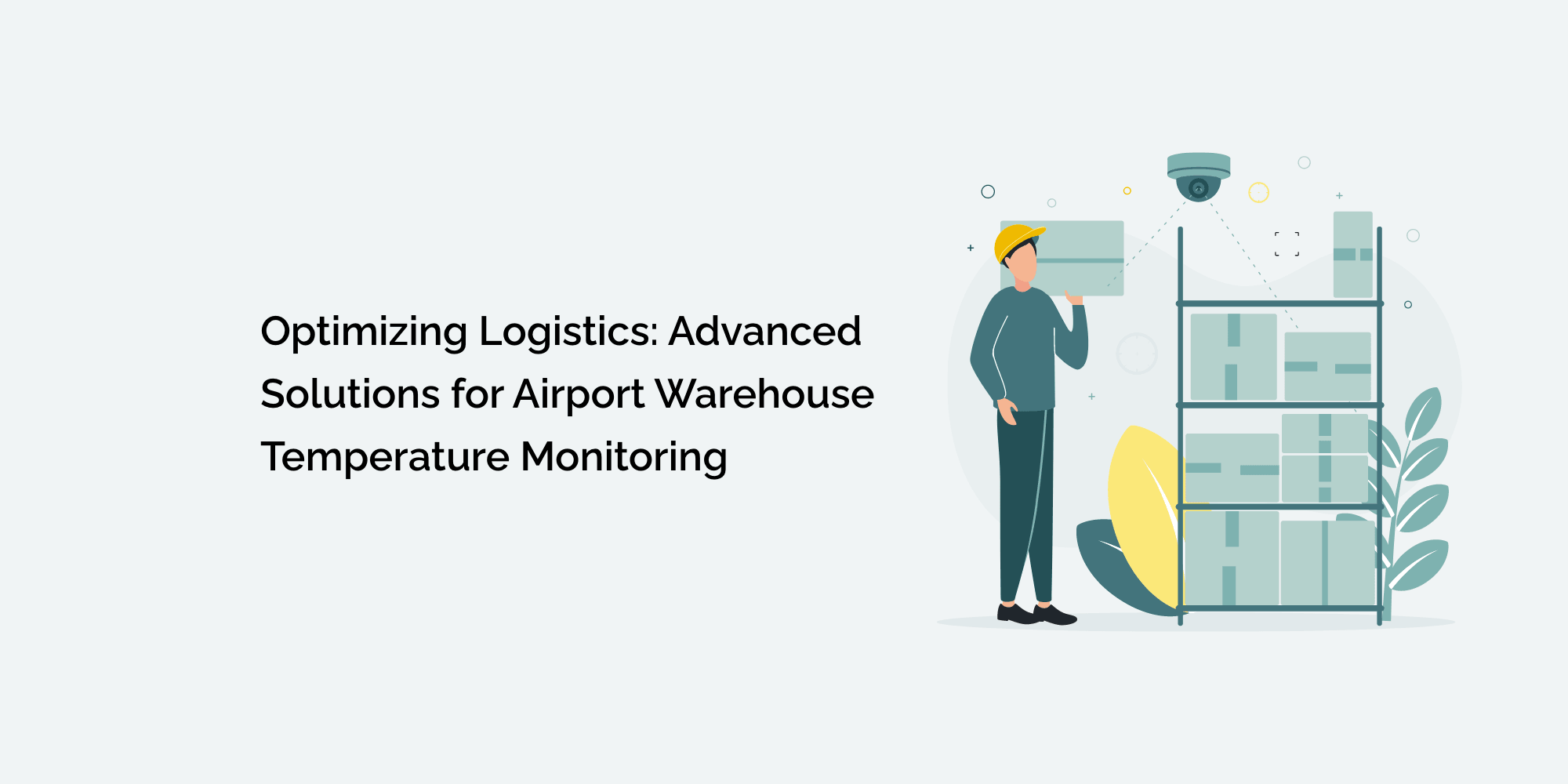Temperature-sensitive cargo, including pharmaceuticals, perishable goods, and electronics, demands strict temperature control throughout the logistics process to preserve its quality and safety. Airport warehouses are crucial hubs for handling and storing these sensitive goods before they reach their final destinations. Implementing advanced temperature monitoring solutions in airport warehouses is essential for optimizing logistics, ensuring compliance with industry regulations, and safeguarding valuable inventory.
In this blog, we will explore cutting-edge technologies and best practices for airport warehouse temperature monitoring, focusing on how these advanced solutions can streamline logistics and enhance overall operational efficiency.
Internet of Things (IoT) and Sensor Networks
The Internet of Things (IoT) revolutionizes temperature monitoring by connecting physical devices to the internet, enabling data exchange and real-time communication.
a. Wireless Sensor Networks: Deploy wireless temperature sensors throughout the warehouse to collect continuous, real-time temperature data. These sensors can be easily installed and repositioned as needed, ensuring comprehensive coverage.
b. Data Transmission and Storage: IoT-enabled sensors transmit temperature data to a centralized platform or cloud-based storage in real-time, facilitating instant access to critical information from any location.
c. Predictive Analytics: IoT platforms equipped with AI-driven analytics can predict temperature fluctuations and potential equipment failures, allowing for proactive decision-making and maintenance.
Edge Computing
Edge computing brings data processing capabilities closer to the source of data, reducing latency and enhancing real-time temperature monitoring and control.
a. Faster Response Times: Edge computing enables temperature data to be analyzed locally, minimizing response times and reducing the dependency on cloud connectivity.
b. Decentralized Architecture: In edge computing, temperature monitoring devices process data independently, making the system more resilient and reducing the risk of system-wide failures.
c. Reduced Data Transfer: Edge computing reduces the amount of data transmitted to the central server, optimizing network bandwidth and storage.
Machine Learning and Artificial Intelligence (AI)
Machine learning and AI algorithms can revolutionize temperature monitoring by optimizing temperature control and predicting potential issues.
a. Data-driven Insights: AI can analyze vast amounts of historical temperature data, identifying patterns and optimizing temperature control strategies based on real-time conditions.
b. Predictive Maintenance: AI can forecast equipment malfunctions, enabling proactive maintenance and minimizing downtime.
c. Adaptive Control: Machine learning algorithms can adjust temperature control settings dynamically based on historical and real-time data, optimizing energy efficiency and minimizing temperature fluctuations.
Remote Monitoring and Control
Airport warehouse operations often involve mobile staff, making remote temperature monitoring and control critical for efficient logistics.
a. Mobile Applications: Develop user-friendly mobile applications that provide real-time temperature updates and enable remote control of temperature control systems.
b. Cloud-based Solutions: Implement cloud-based temperature monitoring systems accessible from any internet-connected device, allowing for 24/7 monitoring regardless of location.
c. Real-time Alerts: Remote monitoring systems send instant alerts to warehouse staff and management when temperature thresholds are breached, facilitating immediate actions.
Blockchain Technology
Blockchain technology offers secure, transparent, and tamper-resistant temperature data management, ensuring the integrity of temperature monitoring records.
a. Immutable Records: Temperature data recorded on a blockchain cannot be altered, providing an indisputable audit trail for compliance and regulatory purposes.
b. Supply Chain Transparency: Blockchain allows stakeholders, including customers, manufacturers, and regulatory authorities, to verify the temperature history of products throughout the supply chain.
c. Smart Contracts: Blockchain can facilitate automated temperature control based on pre-defined conditions and trigger alerts or actions when deviations occur.
Thermal Imaging and Infrared Technology
Thermal imaging and infrared technology enhance temperature monitoring capabilities, especially for large and complex warehouse environments.
a. Non-contact Monitoring: Thermal imaging and infrared sensors can monitor temperature without physical contact, reducing the risk of cross-contamination and damage to sensitive goods.
b. Rapid Scanning: These technologies enable quick scanning of large storage areas, providing a comprehensive overview of temperature conditions.
c. Anomaly Detection: Thermal imaging can detect hotspots and cold spots, helping identify potential equipment malfunctions or areas requiring attention.
Data Visualization and Analytics
Advanced data visualization tools facilitate the analysis and interpretation of temperature data, offering actionable insights for optimizing warehouse operations.
a. Real-time Dashboards: Display real-time temperature data on intuitive dashboards, allowing warehouse staff to monitor conditions at a glance.
b. Historical Trends: Visualizing historical temperature trends enables warehouse managers to identify patterns, make data-driven decisions, and optimize temperature control strategies.
c. Customizable Reports: Generate customized reports based on specific temperature-sensitive cargo categories, allowing for compliance documentation and stakeholder reporting.
Conclusion
Airport warehouse temperature monitoring is a mission-critical aspect of optimizing logistics and safeguarding temperature-sensitive cargo. Advanced solutions such as IoT and sensor networks, edge computing, machine learning, remote monitoring and control, blockchain technology, thermal imaging, and data visualization offer unprecedented opportunities to streamline operations and enhance warehouse efficiency.
As airport warehouses continue to evolve in the face of global logistics challenges, investing in these advanced temperature monitoring technologies will become increasingly vital. By embracing these cutting-edge solutions, airport warehouses can ensure compliance with industry regulations, minimize temperature-related risks, enhance customer satisfaction, and solidify their position as reliable logistics partners in the increasingly competitive world of global commerce.








